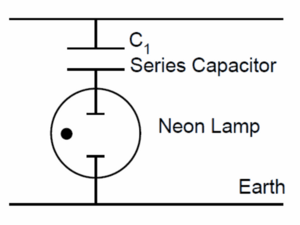Live Line Capacitors
The Technical Ceramics business of CeramTec has extensive experience of the manufacture of ceramic capacitors for high voltage DC and power frequency applications. These products are used all over the world in onerous service conditions, and are backed by rigorous testing procedures to ensure the electrical integrity and long service life of such components.
Over one million capacitors of the categories described here have been successfully used in Live-Line Indication applications. We have decades of involvement in high voltage system practices and the design of capacitors for those environments.
The capacitors described in this section are used in circuitry indicating the presence of voltage on conductors. A capacitor voltage divider enables a small neon lamp to be illuminated or alternatively the low voltage signal may be used to feed a sensing circuit which monitors for supply failure and circuit condition.

Applications
To indicate the presence of voltage and for fault detection on power frequency high voltage distribution switchgear (6.6kV-36kV systems).
The capacitor is connected directly to the HV line and a small current (low voltage signal) is passed which illuminates a neon lamp mounted on the front panel of the switch.
Alternatively the low voltage signal may be used to feed a sensing circuit which monitors for supply failure and circuit condition.
The capacitor is normally contained within a resin moulding. Usually the moulding is made by the switch manufacturers themselves in a shape to suit their own particular needs but we can offer certain complete mouldings or can advise on suitable sources.
Theory
In its simplest form the Live-Line Indication consists of a high voltage ac rated capacitor which is connected in series with the neon indicator between the phase and earth lines. (Fig.1) The addition of higher value, low voltage rated capacitor in parallel with the neon is sometimes preferred. (Fig.2) The object is two-fold - firstly to advise the operator that the connections are live and secondly for operation of re-routing systems in the event of inadvertent disconnection.:


